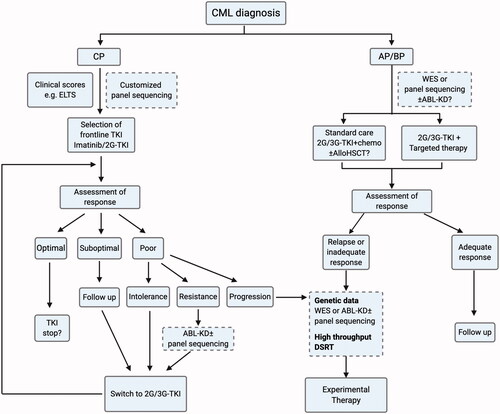Figures & data
Table 1. Studies of the genetic events at different phases of CML in the TKI era.
![Figure 1. Frequency of mutations in cancer-associated genes at diagnosis (CP) and BP-CML. The data used to build the figure were derived from 27 studies of CP and/or BP [Citation38–54,Citation61,Citation63–71] and included genes that were reported to be mutated in more than one patient and in more than one study. *The frequency of patients with mutated genes was calculated in relation to the number of patients screened for each individual gene, which was highly variable between different genes.](/cms/asset/2ac299af-647b-4611-bcde-6b28afcede7f/ilal_a_1894652_f0001_b.jpg)
![Figure 2. Frequency of the most common CHIP mutations in elderly healthy individuals and different leukemias. The frequency of DNMT3A, TET2, and ASXL1 mutations were calculated based on pivotal studies of elderly healthy individuals (>55 years) [Citation143], AML [Citation144,Citation145], and MDS [Citation146].](/cms/asset/f7946e53-77a6-49af-9cc8-4b94d90601b7/ilal_a_1894652_f0002_b.jpg)

